Butterflies Will Flock To Your Garden If You Plant These 8 Vibrant Flowers In Spring
Nectar-rich blooms are a lifeline for butterflies. Create a summer garden for these colorful flitting pollinators by sowing seeds of these flowers in spring.
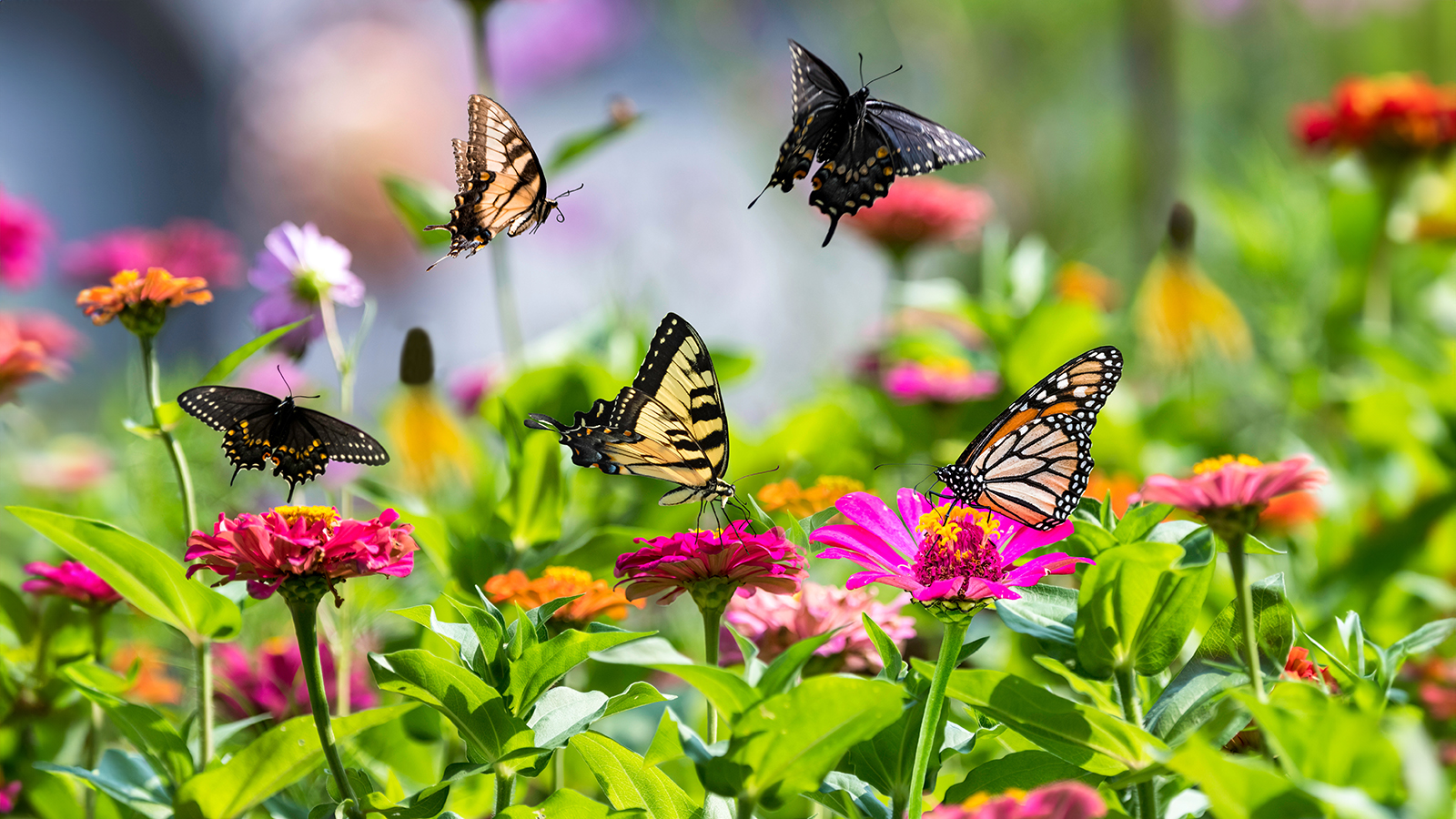

Home flower gardens are a vital resource for our pollinator friends, including so many delightful species of butterflies. As their preferred habitats of open fields give way to human development, our home’s flower gardens become necessary locations for feeding and shelter.
The good news is that many of the flowers butterflies rely on for nectar, food and nesting throughout summer are plants that we humans also find alluring for their beauty and cheeriness. Choosing the right plant combinations to attract butterflies is key to nurturing these precious pollinators. Even better, we can easily grow these same flowers by planting seeds in our garden.
Springtime seed sowing gives you the opportunity for both direct sowing seeds outside and starting seeds indoors. Quick-germinating seeds such as marigolds and dill can be planted in the ground as the soil warms. Seeds of other flowers with longer germination requirements are best sown indoors in trays filled with quality seed-starting mix several weeks before your local last frost date.
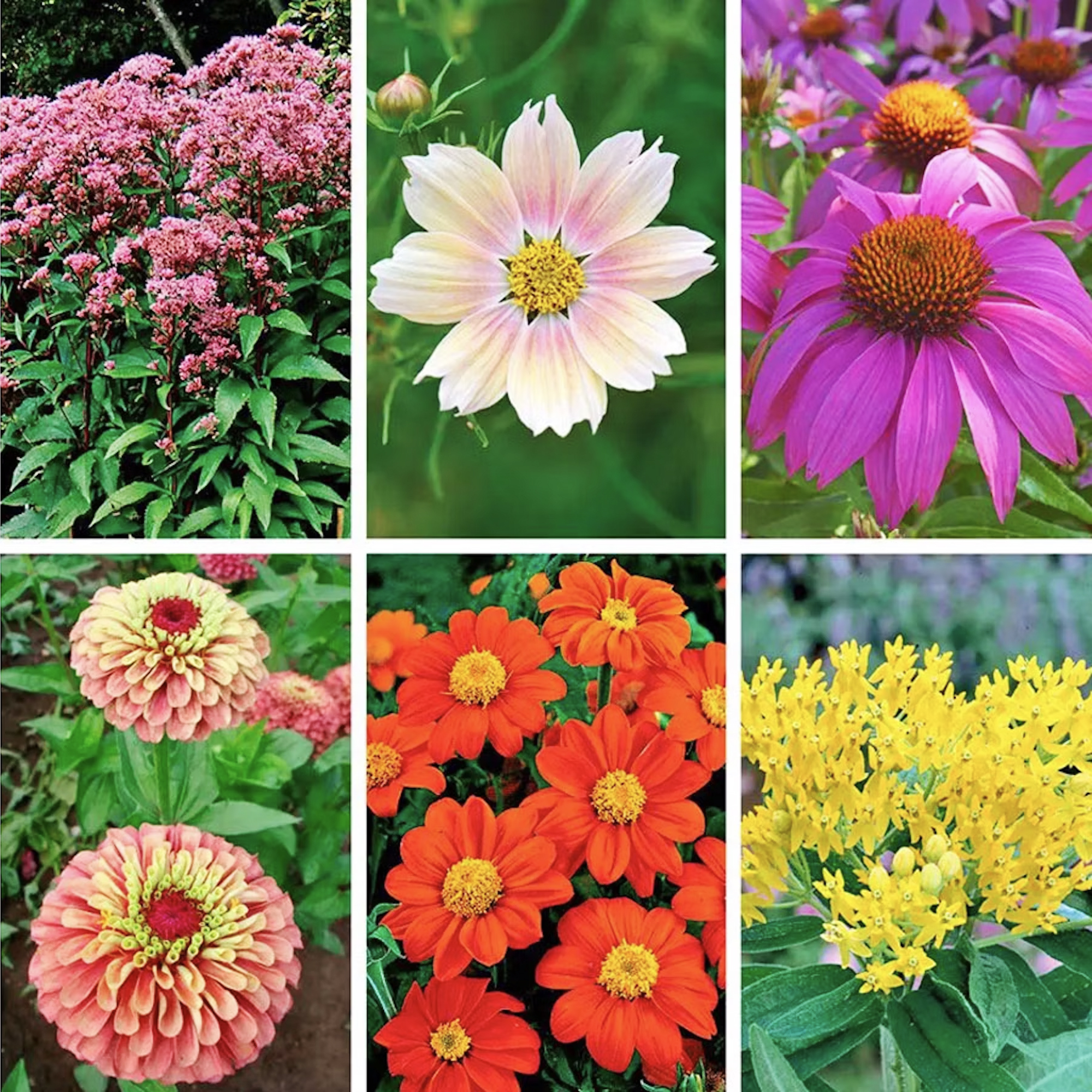
Butterflies need your flowers! Find the seeds of beautiful butterfly-attracting flowers in the Butterfly Lovers Seed Collection in the Garden Know How Shop.
1. Coneflowers
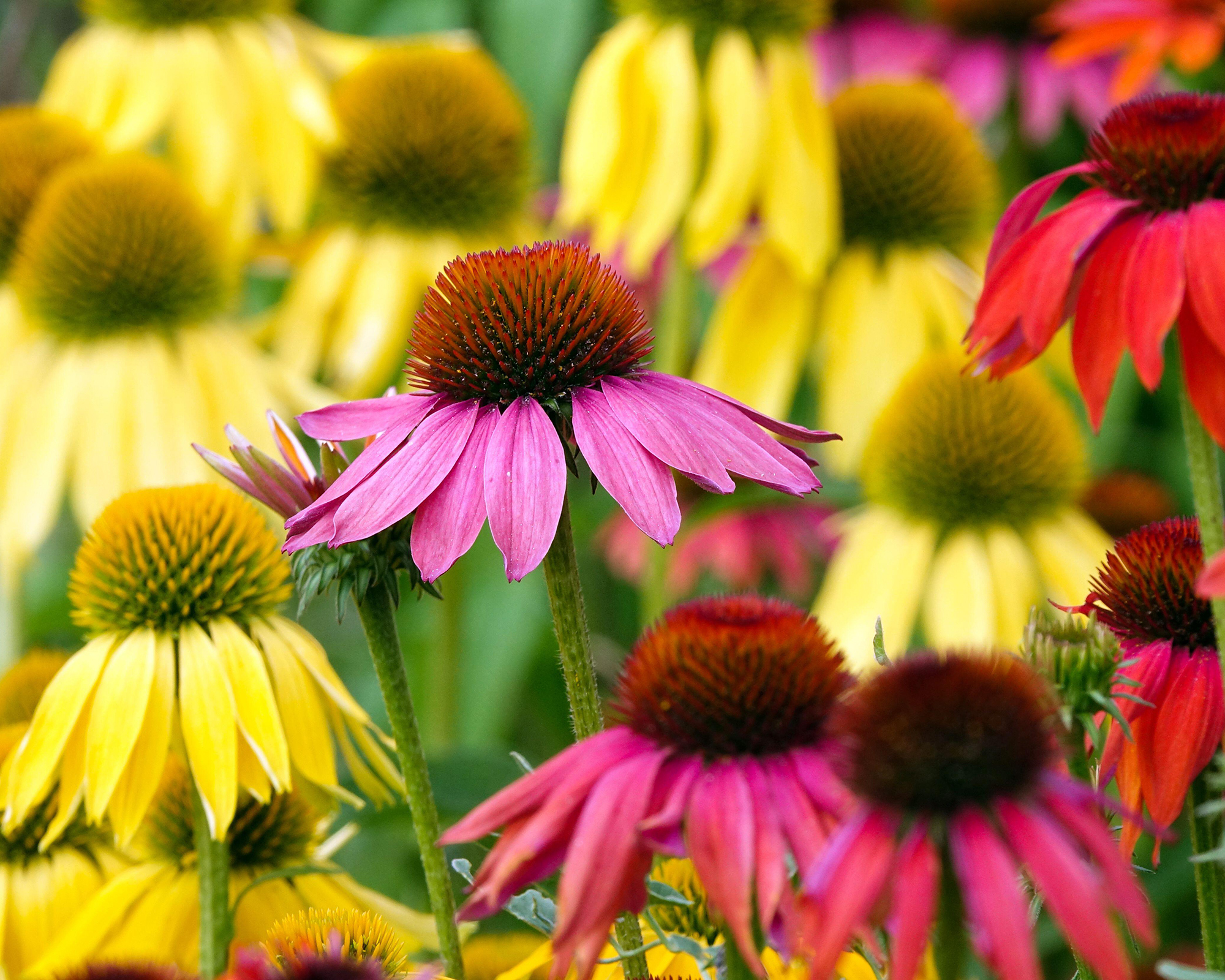
Echinacea purpurea is a native perennial with shuttlecock-shaped blooms and sturdy and colorful flowerheads. Coneflowers attract an assortment of different butterflies, including monarchs, swallowtails, and fritillaries, all of which love their bounty of nectar.
Hardy in USDA zones 3 to 9, coneflowers are at home in a wide range of climates. These are full-sun perennials but can tolerate a bit of shade. Sow coneflower seeds directly in the ground in late winter or early spring, or sow in trays indoors for better germination rates.
These Cheyenne Spirit Coneflowers, available as seeds from the Gardening Know How Shop, bloom in shades of cream, yellow, gold, orange, scarlet, red, and purple from midsummer through fall.
Gardening tips, videos, info and more delivered right to your inbox!
Sign up for the Gardening Know How newsletter today and receive a free copy of our e-book "How to Grow Delicious Tomatoes".
2. Mexican Sunflower
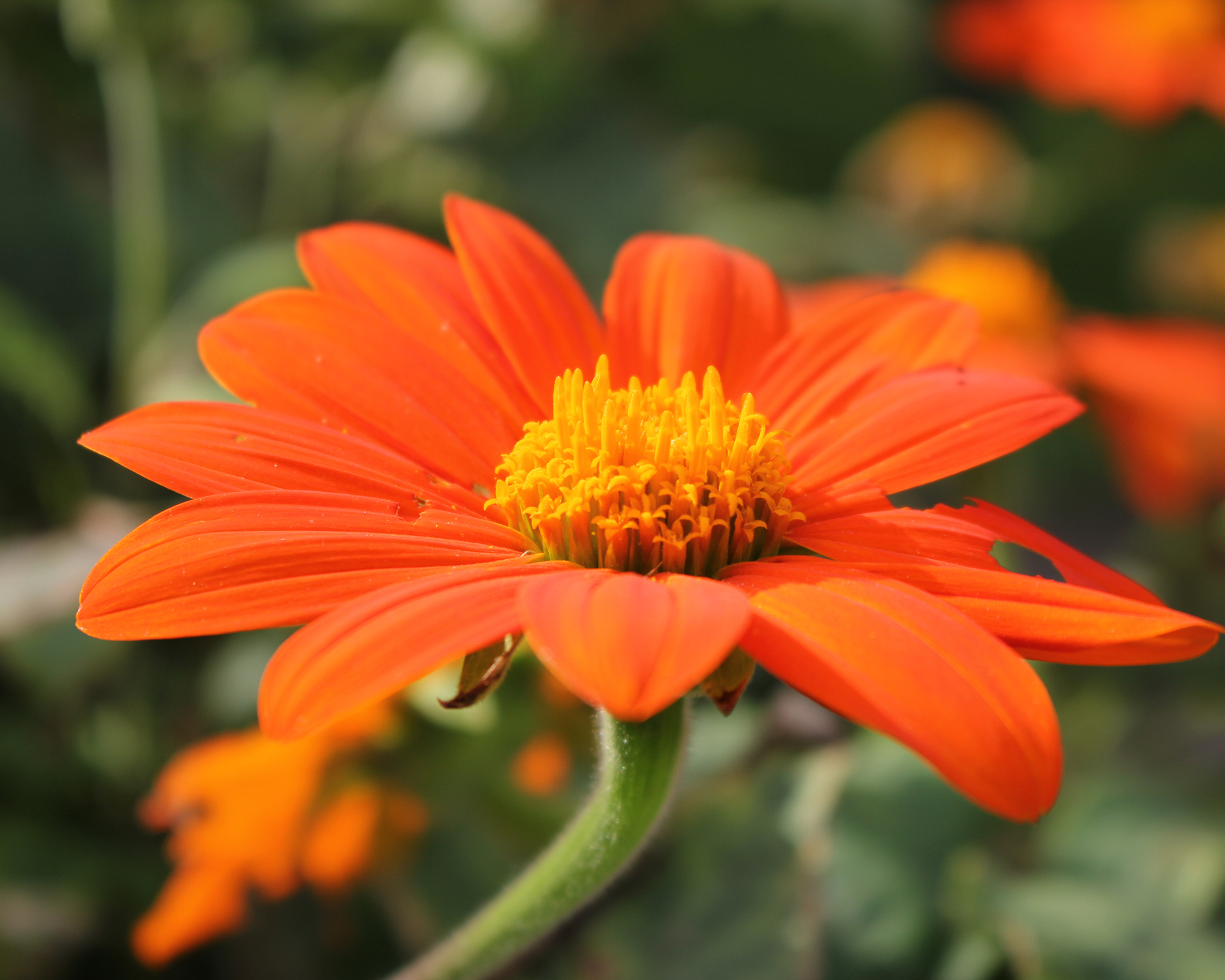
Also known as Tithonia, these lovely sunflower-looking annuals set the garden aflame in red and orange blooms. Butterflies enjoy the rich stores of nectar and also greatly appreciate the large, flat flowers that act as landing pads from which to feed.
Thriving in USDA zones 5 to 10, Mexican sunflowers prefer warm temperatures and sunny conditions. They’re fairly drought tolerant once established and can grow 4 feet tall in one season. Sow seeds directly into the garden once the soil is warm and the danger of frost has passed. Or sow seeds in trays indoors 6 to 8 weeks prior to your last frost date.
In terms of variety, try Fiesta del Sol, a dwarf Mexican sunflower that captivates pollinates with an abundance of deep orange flowers.
3. Joe Pye Weed
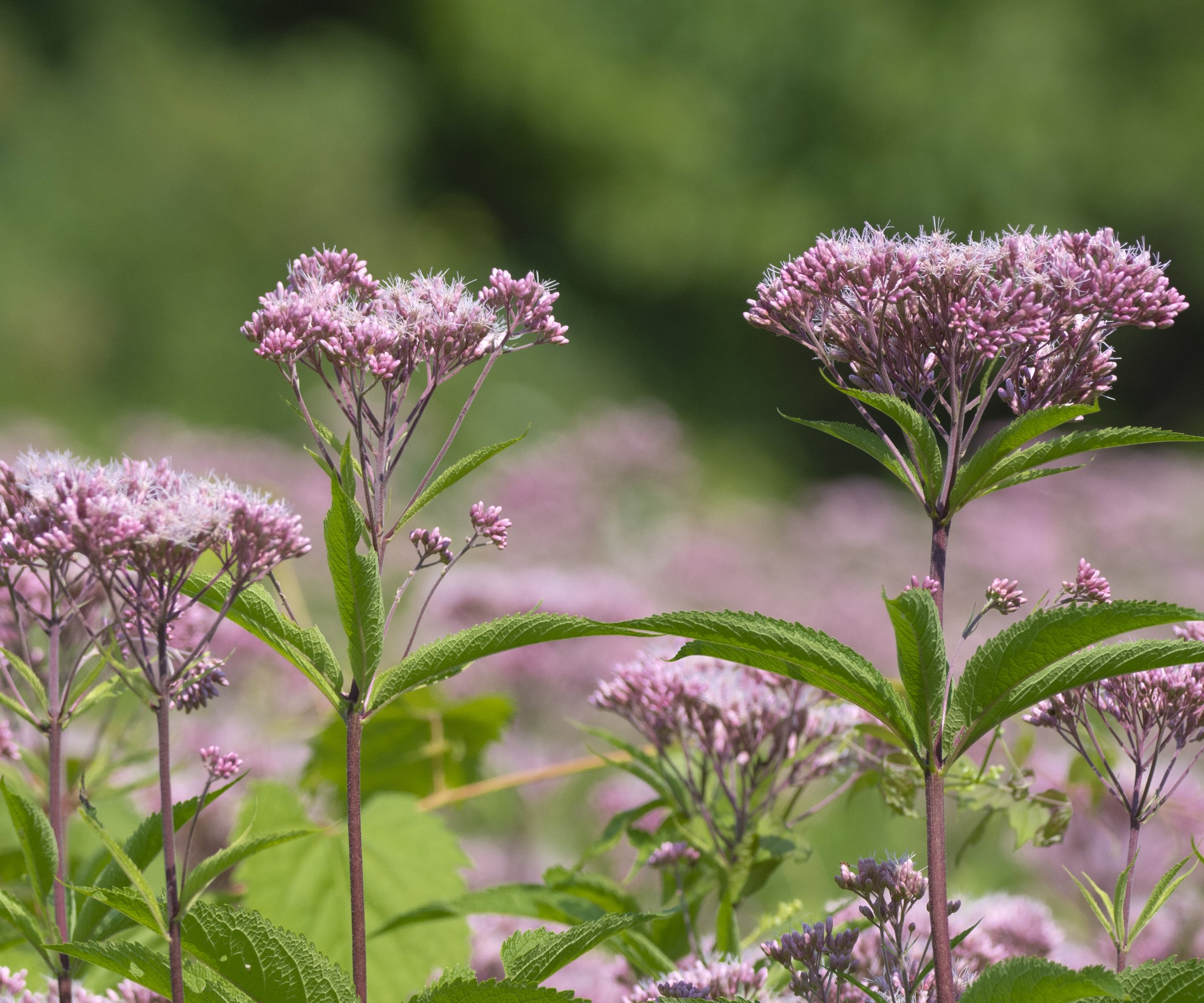
Joe Pye weed (classified as either Eutrochium spp. or Eupatorium spp.) is a stand-out in the garden – literally! Some varieties of this herbaceous North American native perennial grow as tall as 6 foot. It’s a late-summer bloomer and forms flat umbels of pinkish-purple flowers, both reasons that make it one of the late-summer favorite plants for migrating butterflies such as monarchs.
Joe Pye weed (USDA zones 4 to 9) is commonly found in wetlands and moist meadows. Seeds require a period of cold and moist conditions, so sow directly in the garden in late winter. Alternatively, sprinkle seeds on a seed-sowing mix indoors and place in a refrigerator for 4 to 6 weeks before planting in spring. Once germinated, plant in full sun and moist, well-draining soil.
4. Zinnias
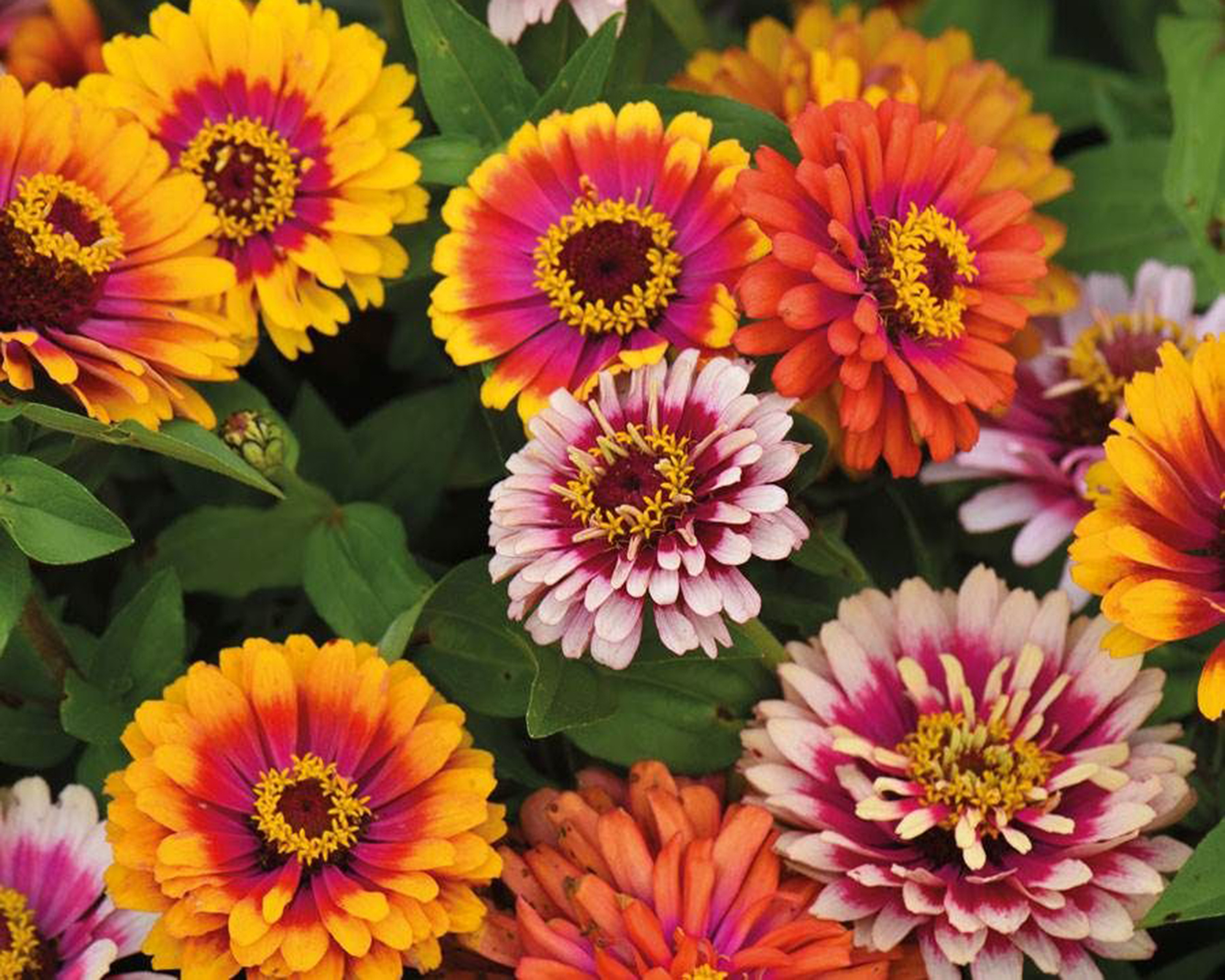
One of the most recognizable flowers in the garden, zinnias bring a vibrant brightness to flower beds, containers, and bouquets. Many have a flattish flower head and an abundance of nectar, making them favorite stops for butterflies.
Zinnias thrive in USDA zones 3 to 10 in full-sun and low-water locations with well-draining soil. Sow zinnia seeds directly in the garden after your last frost. Or, start seeds indoors about 4 to 6 weeks before the last frost.
The Gardening Know How Shop offers a great variety of zinnia seeds, including the award-winning Profusion AAS Mix and the Funfair Mix of bold bicolor blooms. Or get five stunning varieties in our Zinnias for Cutting Collection.
5. Butterfly Weed
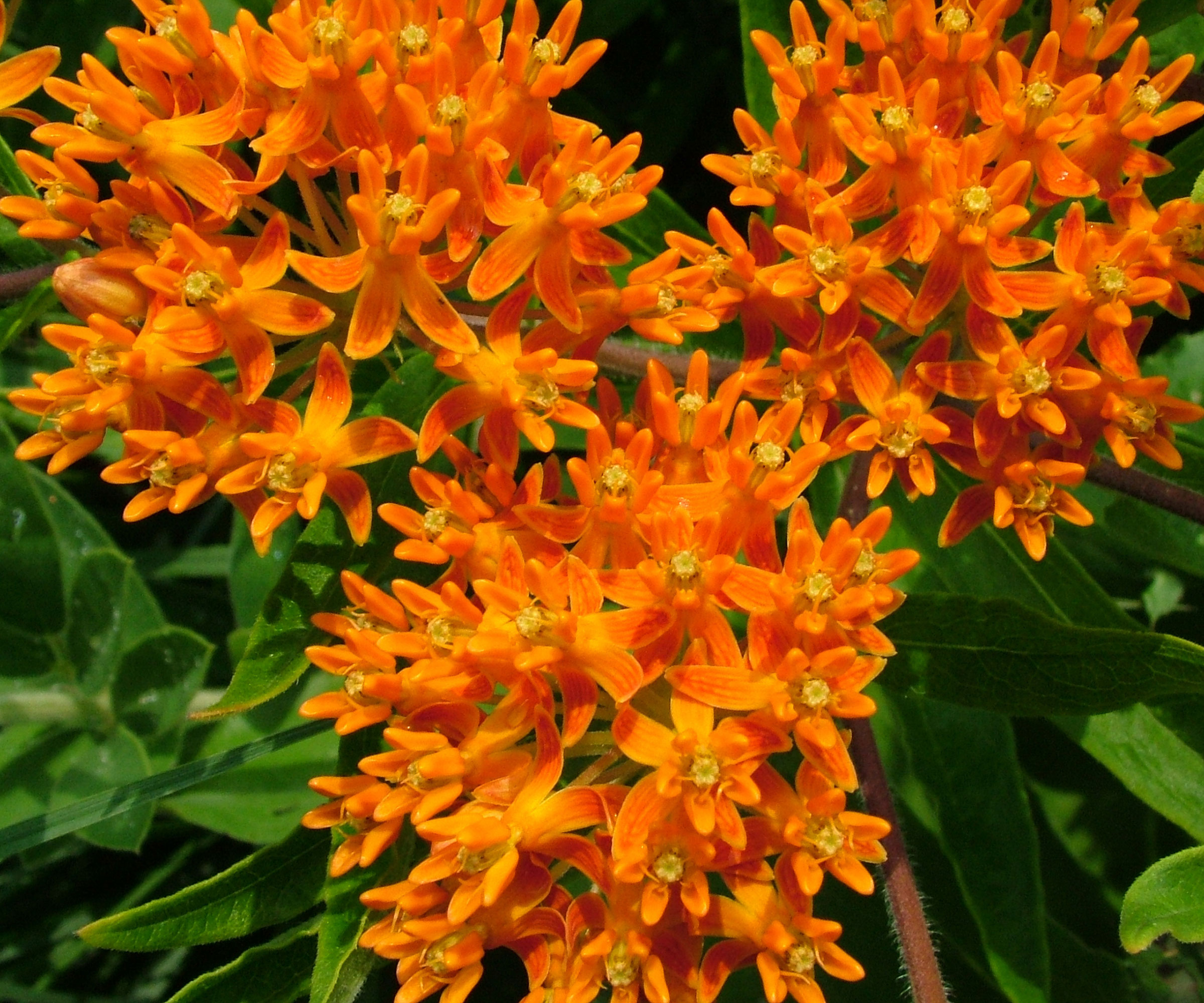
Asclepias tuberosa, also known as butterfly weed or butterfly flower, is a key element in a butterfly garden. This North American native perennial is not only a source of nectar, but is also butterfly host plant for monarchs, whose caterpillars feed exclusively on the Asclepias species.
Hardy in USDA zones 3 to 9, this full-sun plant prefers well-drained and even gravelly soils. It’s also drought tolerant, making it a superb plant for open and dry spaces – perfect for low-maintenance gardens.
Butterfly weed requires a period of cold for its seeds to germinate – a process known as seed stratification. Sow seeds in fall or winter or refrigerate for 4 to 6 weeks before planting outside in spring.
You’ll find seeds of another Asclepias (the common milkweed) in the Garden Know How Shop.
6. Cosmos
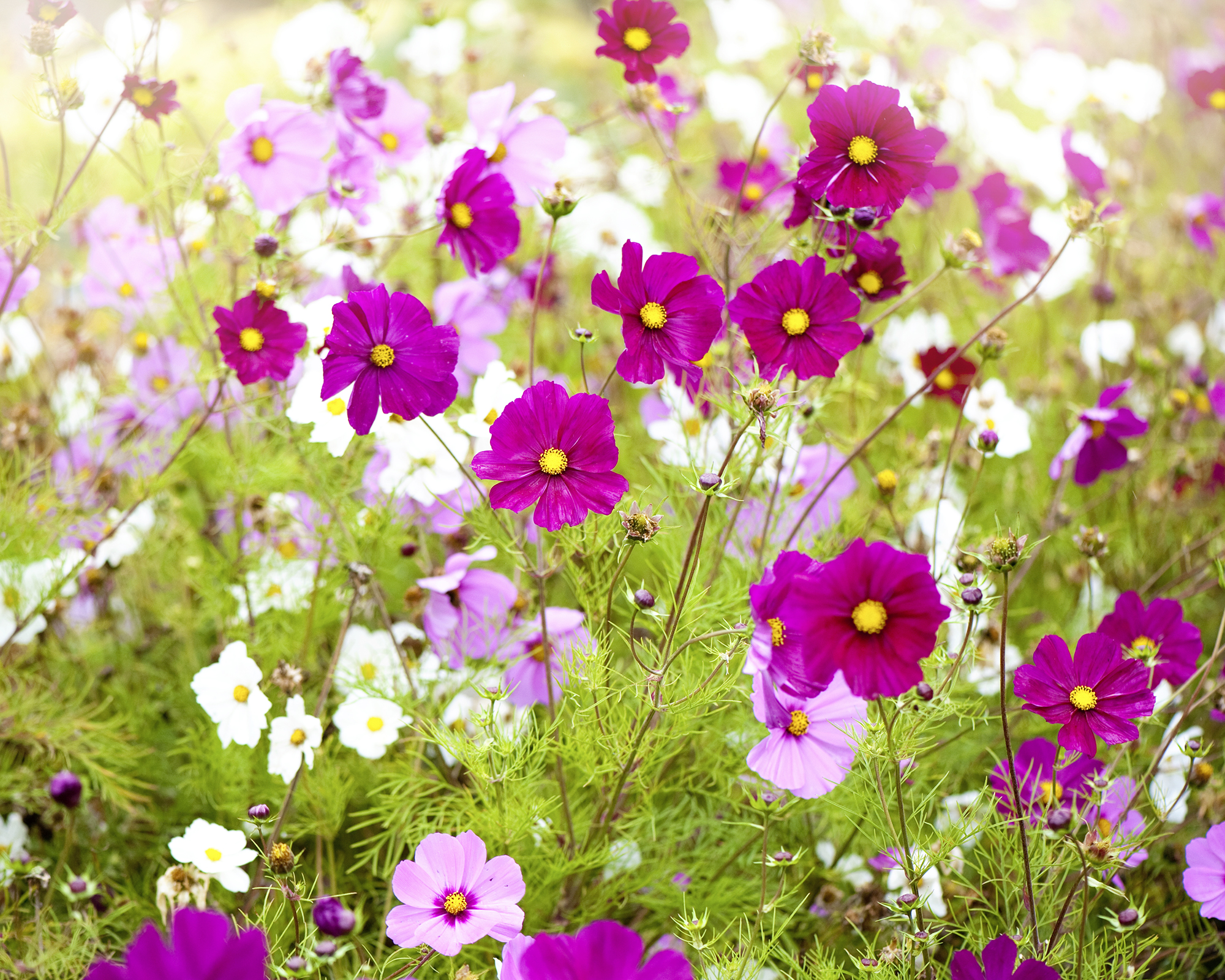
Another vibrantly colored annual for garden beds and borders, cosmos flowers (Cosmos bipinnatus) bob their daisy-like pink, white, and purple heads at the end of long stalks. Their open, cup-shaped flowers make it easy for butterflies to access their rich reserves of nectar.
These Mexican and Central American natives prefer full-sun conditions and well-draining soil. They also are incredibly easy to grow from seed. Sow seeds directly in the ground, about ¼-inch deep, after the danger of frost. You’ll see them popping through the soil in about 7 to 10 days.
The Gardening Know How Shop has several cosmos flower seed mixes available, including the large- and flat-petaled Sonata Mix and the Cupcakes and Saucers Mix with curved petals that look just like baking cups!
7. Marigolds
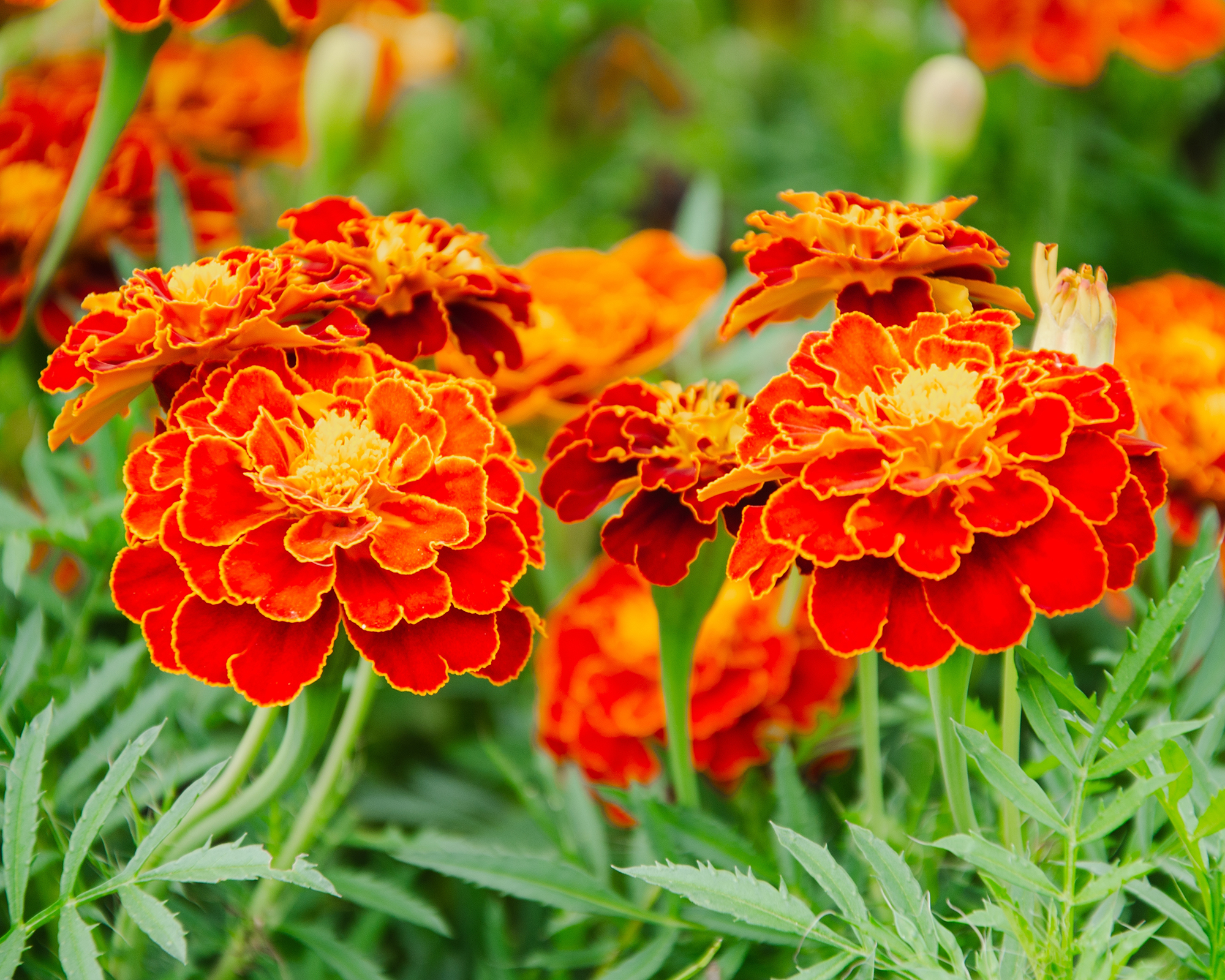
Marigolds are North American native annuals with bright and cheery blooms in many shades of yellow, orange, and red. They're low-maintenance stars: plant them in, water them well, and they can handle it from there. They bloom continuously from spring until frost, and their particularly strong scent repels certain pests – and rabbits, as well!
Sow marigold seeds indoors 6 to 8 weeks before your last frost date. Since they germinate within a week, it’s just as easy to sow them directly in place outdoors after the last frost.
So many great marigold seeds are available for planting. The Gardening Know How Shop offers several varieties, including Disco Mix with its single-flowered mix of solid colors, and Super Hero Spry Marigold, a bicolor with contrasting yellow inner petals and dark-red outer petals.
8. Dill
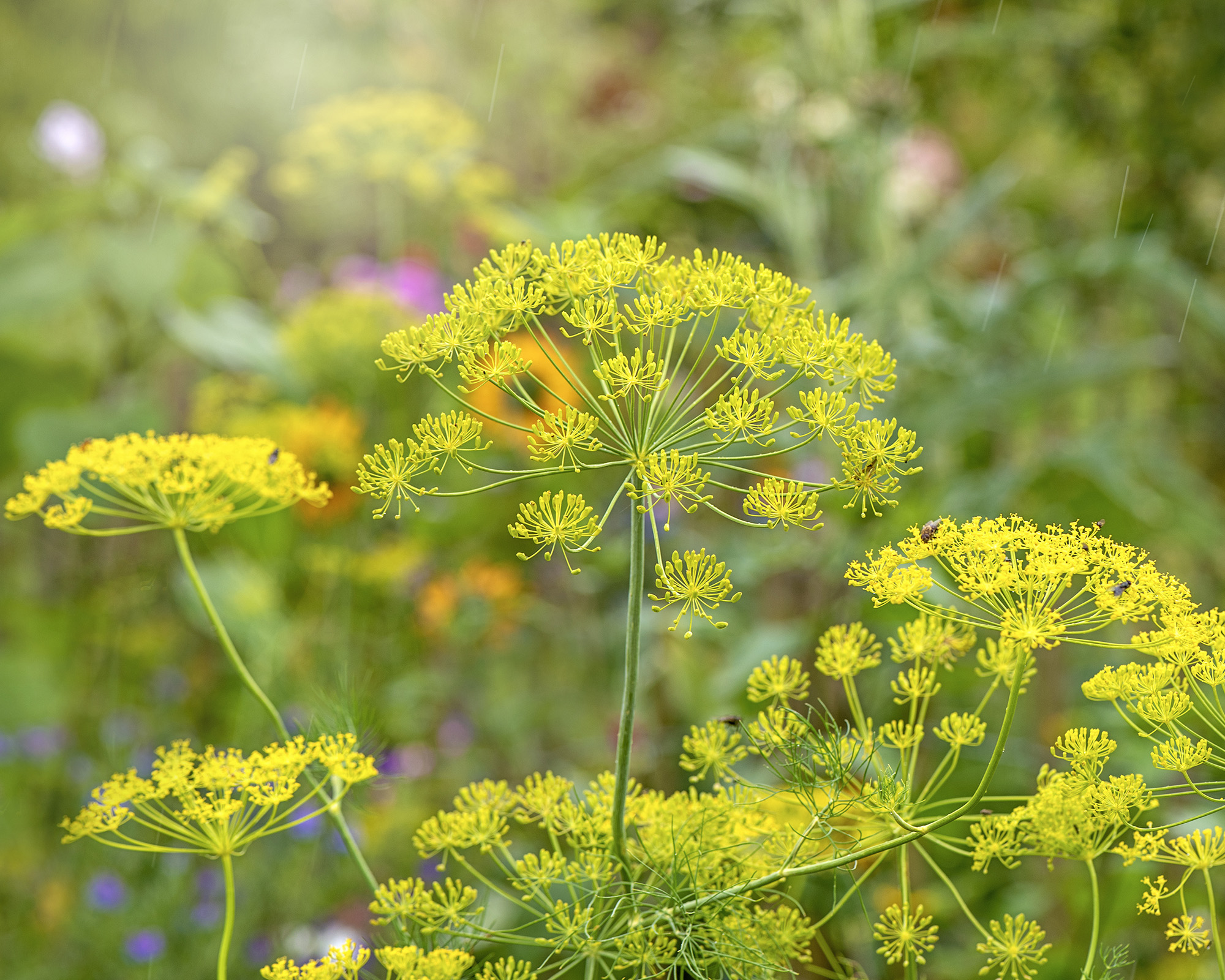
Herbs attract butterflies, too! The aromatic annual dill (Anethum graveolens) is a tall, frilly foliage addition to flower and vegetable gardens. It is also a host plant and food source for swallowtail butterfly larvae. If you’ve never seen a swallowtail butterfly emerge from its chrysalis, it’s one of nature’s wonders!
Dill seeds easily directly in the garden. Sow seeds about ¼-inch deep and thin the seedlings to a desired density. It’s a triple threat –a beautiful plant, a tasty herb, and a butterfly magnet – and such a treasure in the garden.
Find seeds of dill and a host of other delectable herbs in the Gardening Know How Shop.
More Pollinator Garden Inspiration
- Have you heard about Bee Cups for thirsty pollinators? Discover the viral pollinator water stations saving the bees, one sip at a time.
- Plant a butterfly container garden with these 8 beautiful ideas for pollinator-friendly pots.
- Visit our Pollinator Garden Shop for more plants and products to support wildlife in your yard.
- Attract more pollinators with the 8 best nectar-producing plants for butterflies, bees, and other pollinators.
- Sign up for the Gardening Know How Newsletter for a regular dose of sustainable gardening inspiration and exclusive offers direct to your inbox.
This article features products available from third-party vendors on the Gardening Know How Shop.

Ellen Wells is a horticultural communications consultant with 30 years of experience writing about all aspects of the gardening world.
She has worked for many of horticulture’s biggest brand names, writing blog posts, articles, press releases, and design and instructional pieces. Her previous roles include Senior Editor and Editor-at-Large for Ball Publishing.
Ellen is based in New England where she gardens in Zone 7a. She loves tending to flower-filled containers on the patio and puttering around her vegetable garden.
-
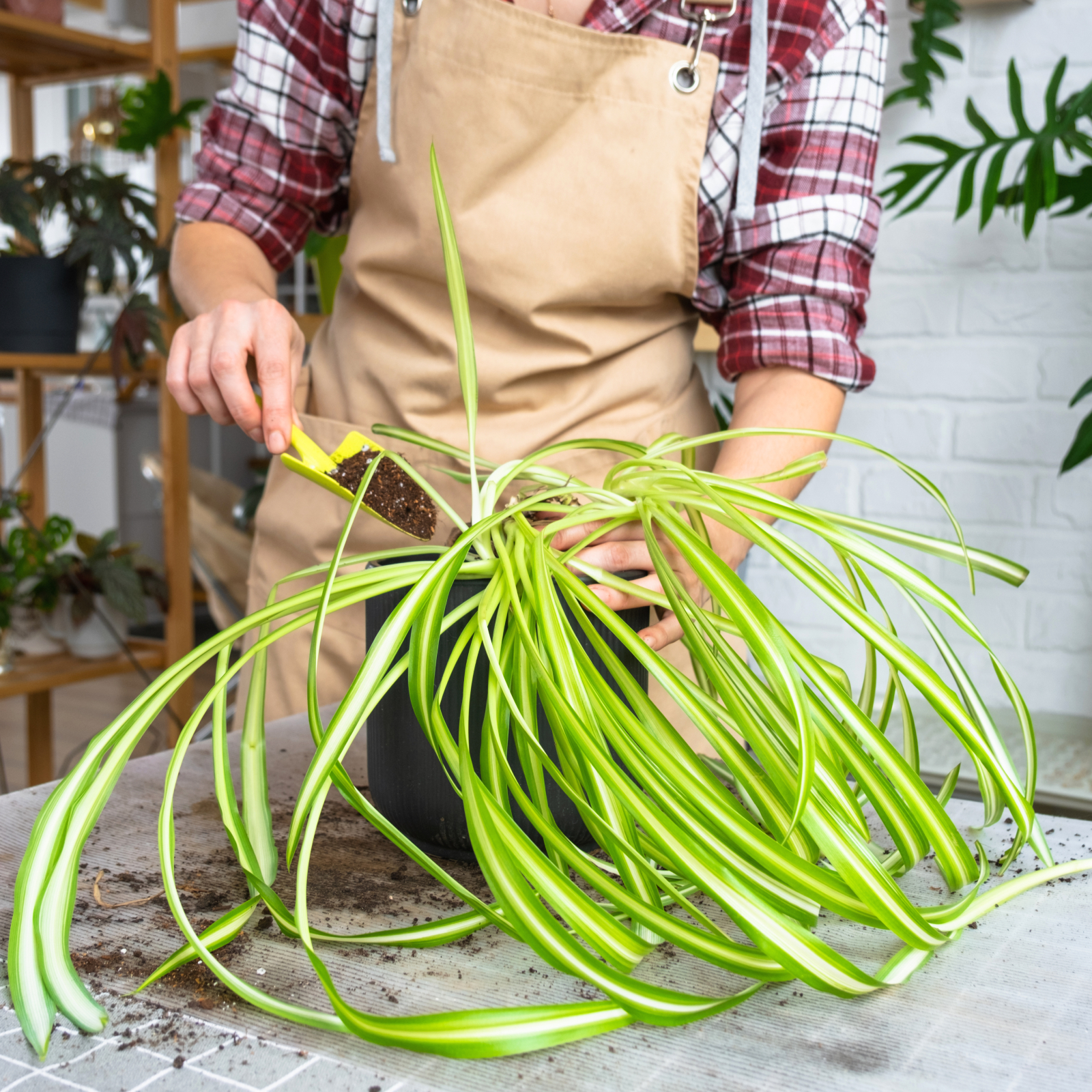 Best Spider Plant Soil – Complete Soil Guide And Expert Tips For Keeping Plants Happy
Best Spider Plant Soil – Complete Soil Guide And Expert Tips For Keeping Plants HappySpider plants are fun and easy plants to grow, but what is the best soil for a spider plant? Selecting the right soil is important so they can thrive.
By Bonnie L. Grant
-
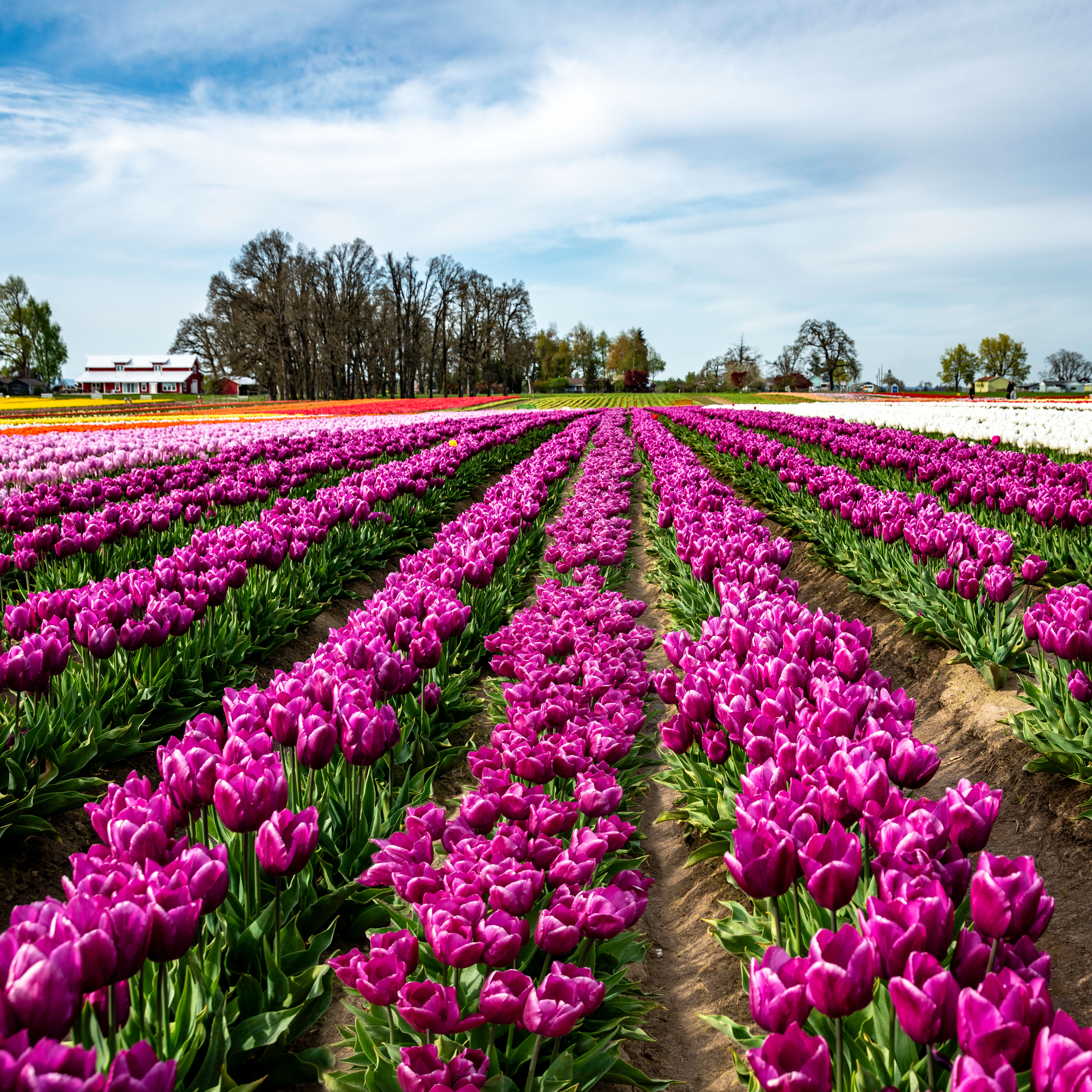 Do You Love Tulips? These 6 Tulip Festival Events Will Inspire You For The Growing Season
Do You Love Tulips? These 6 Tulip Festival Events Will Inspire You For The Growing SeasonAre you passionate about tulips and looking for truly inspirational bulb planting tips – or just longing to see open spaces filled with color? Check out these tulip festival events
By Teo Spengler